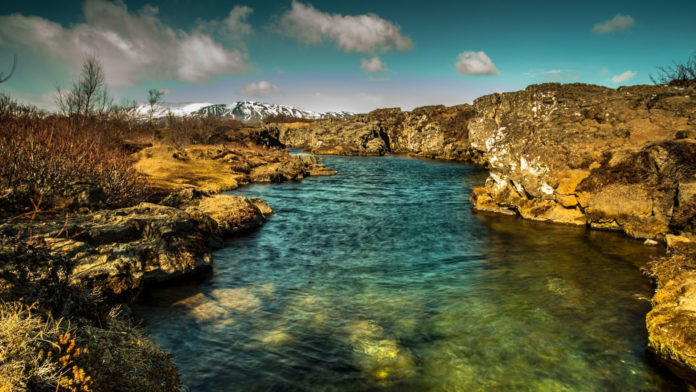The nature of tectonic-magmatic processes during early Earth history remains one of the important questions in Precambrian geology. While some hypotheses suggest that plate tectonics began in the Hadean, others indicate that the Hadean was characterized by long-lived protocrust and an absence of significant plate tectonic processes.
In a new study, scientists analyzed some very rare, ancient, and nearly indestructible crystals the size of small grains of sand called zircons for chemical clues about the onset of plate tectonics. Their study suggests that these zircons underwent a significant transition in geochemistry some 3.8 billion years ago. This transition makes the grains look like the zircons formed today in the red-hot environments where plate tectonics happen.
Nadja Dragon, a Harvard assistant professor of Earth and Planetary Sciences and the paper’s first author, said, “Prior to 3.8 billion years ago, the planet didn’t seem as dynamic. Today, lots of crust gets constantly destroyed in subduction zones, and new crust is created. Many [previous] zircons showed that back then, once the early crust formed, it lived for a long time — about 600 million years in this case. While there was some internal reworking, we never created a new granitic crust. … Then, 3.8 billion years ago, everything changed.”
Zircons can be considered tiny time capsules that retain chemical clues of the Earth’s first 500 million years. Some were produced in the planet’s magma more than 4 billion years ago when the Earth was still in its infancy geologically. It makes them the world’s oldest known materials. Their secrets can be deciphered by zapping them with lasers.
Scientists did the same for their study. They noticed that as the planet cooled, a lot of new crust formed. The geochemical signatures of zircons began to resemble those found in subduction zones, where two colliding tectonic plates collide, and one slides under the other and into the mantle, where it is recycled (code word for burned to a crisp).
Scientists noted, “It’s not clear whether there were subduction zones 3.8 billion years ago, but what is known is that the new crust being formed was likely a result of some type of plate tectonics.”
The research adds to a growing body of evidence indicating tectonic movement happened early in Earth’s 4.5 billion-year existence. It sheds light on how the planet became livable and the circumstances under which the first forms of life arose.
Scientists gathered 3,936 new zircons from a 2017 expedition in South Africa for the study. Thirty-three of them were at least 4 billion years old. It was quite the haul because zircons from that time period are difficult to find because of their size.
After grinding down rocks they’ve collected into sand, they segregated the resulting discoveries. The zircons from South Africa were 4.1 billion to 3.3 billion years old. The scientists looked at the hafnium isotope, oxygen isotope, and trace element compositions of the zircon crystals they discovered. Each of them gave them a different puzzle.
For instance, the hafnium isotope offered hints about the formation and evolution of the Earth’s crust; the oxygen isotopes about whether there were oceans; and the trace elements about the composition of the crust. The data suggested that the rate of crust formation started picking up almost 4 billion years ago.
Dragon said, “All of them show this shift between 3.8 and 3.6 billion years ago.”
“There wasn’t much data on the other two geochemical features, and she hopes to focus on those next, including looking at when oceans started forming.”
“There’s so much to do. I don’t even know where to start.”
Journal Reference:
- Nadja Dragon et al. Destabilization of Long-Lived Hadean Protocrust and the Onset of Pervasive Hydrous Melting at 3.8 Ga. DOI: 10.1029/2021AV000520
